Powering an A/C from Solar
Just Ask Mike (J.A.M.): My SWAG chart on solar panels and air conditioners
Hey Mike,
Please help me understand this. I’ve been following your recent articles about solar panels and air conditioners, and wonder if there’s a simple chart you can provide that will give us a hint of just how hard/expensive or easy/cheap this is to do. And do we really need a SoftStartRV to run an air conditioner with a 2kW inverter, or is that just sales hype? I really appreciate your straight talk on these complicated topics. —Doug Z.
Dear Doug Z,
Well, since you asked nicely and don’t expect a deep dive into this, I can certainly come up with a basic chart showing the number of batteries and solar panels you need to run an air conditioner for a certain amount of hours.
And yes, if you want to get by with a 2,000-watt inverter you’ll most likely need a SoftStartRV™ controller to keep the inverter from going into safe mode and tripping off when the compressor starts up with a big surge current. But you can certainly give it a try without any SoftStart technology, and if it works for you, then all is well.
Here are my basic guesses….
I’m going to start with a few assumptions which will then be worked into the graph. First, I’ll calculate the numbers for 100-amp-hr Lithium batteries that can be run down to 0% capacity without any damage. As far as I can see, if you want to run an air conditioner from your RV batteries for a few hours, Lithium batteries are the only practical way to do it.
If you’ll be using some sort of deep-cycle lead-acid or AGM battery that shouldn’t be discharged below 50% of capacity, you’ll need to double the number of batteries. Yes, my numbers are for the least amount of batteries needing the most compact battery technology.
Panel count…
Next, I’ll be showing the number of 100-watt solar panels needed to perform a recharge under normal sun/shade conditions. The number I’ve seen used (and which correlates with my own findings) is around 300 watt-hrs per day for each 100-watt solar panel. Again, your mileage will vary depending on how much sun you get, and what season you’re in. And I’m not considering any type of sun-tracking device. This is for flat panels on the roof of your RV.
Air conditioner compressor time…
Finally, the percentage of time that the air conditioner compressor needs to run hugely influences how long a battery bank can power it. In the blazing sun it might need to run 100% of the time, but in the late evening it might only need to run 30% of the time to keep your RV at a reasonably cool sleeping temperature. I’m picking a 50% duty cycle just for consistency. Again, battery life will be hugely influenced by the insulation in your RV, the color of your RV roof, how cool you need your room, and the ambient outside temperature.
Of SWAGs and WAGs…
My 50% compressor duty-cycle WAG (Wild A** Guess) is just that: a simple guess I can use in this algorithm that will let me create a starting number. Sometimes I just consult my Fuzzy Dice, but I did a little more than just roll the dice for this.
However, it’s more of a WAG than a SWAG (a SWAG is a WAG that is supported by Scientific Observation), since I don’t have a lot of field data to calculate this at 50%. This is more of a gut feel of what I’ve casually observed. However, more testing is needed in the future so I can further refine my basic algorithm.
Chart me up…
There you have it: my best guess on what it will take to run an air conditioner in the evening using battery power alone, and how many solar panels you’ll need to recharge those batteries during the day.
This is going to cost serious $$$
Nope, it ain’t cheap. And nope, it ain’t easy. But as battery and solar panel technologies continue to improve and drop in price, there may come a day when you can run your air conditioner overnight from batteries alone without breaking the bank.
For right now I think a combination of 4 Lithium batteries and perhaps 400 to 600 watts of solar panels, along with a small generator to help recharge the batteries during the daylight hours, might be a sweet spot for some of you. But as I like to say: TANSTAAFL (There Ain’t No Such Thing As A Free Lunch). However, the price is coming down all the time.
That’s a wrap…
OK, everyone. Remember that electricity is a useful and powerful force, so we all need to pay attention to safety precautions while using it.
Let’s play safe out there… Mike
.




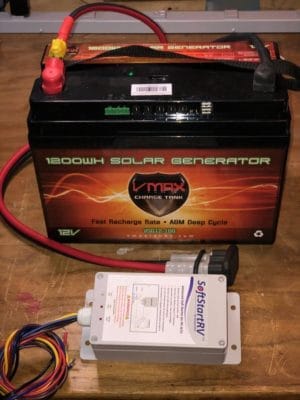
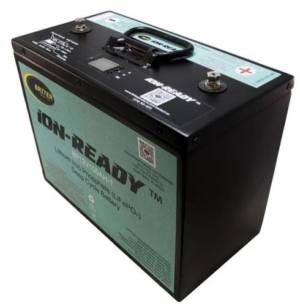
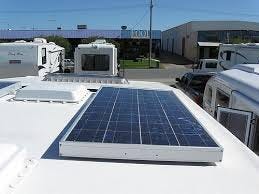


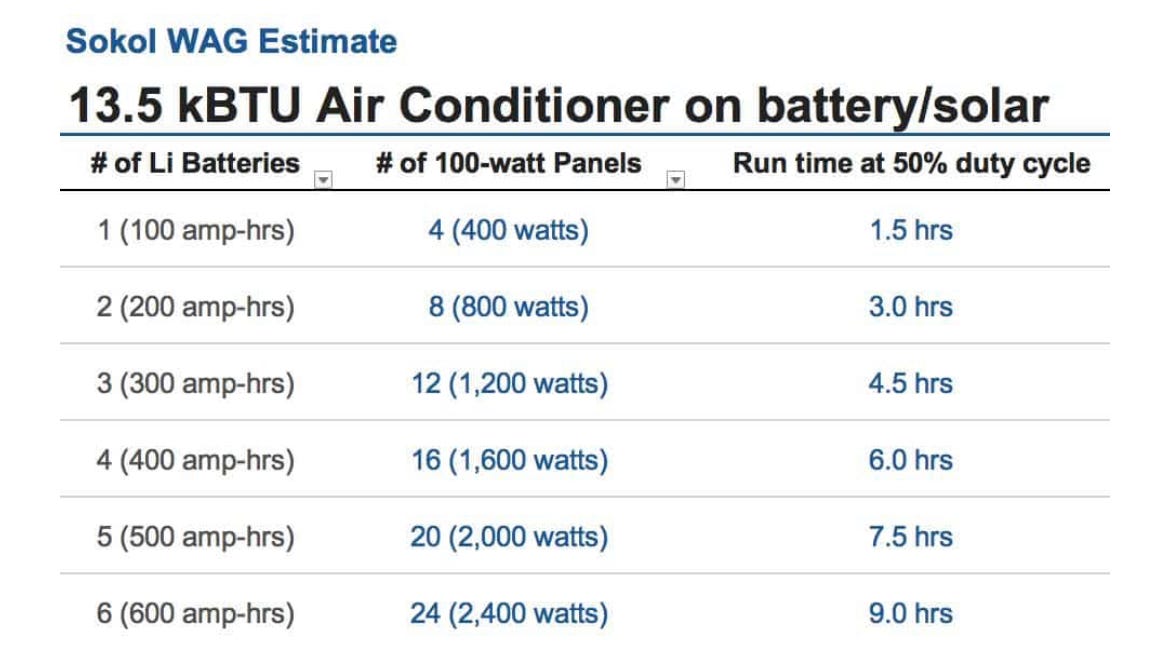
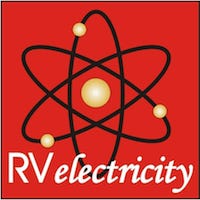
Remember, this chart is really just an educated guess. I’ve based these numbers on several different A/C units and batteries I’ve tested in my lab and GeoPro trailer. Most of it is extrapolations based on limited empirical data. But the ideas and trends should be correct. Powering an A/C overnight from batteries and solar panels is not cheap, but it is possible. However, powering it all day from batteries under high ambient temperatures will be challenging.
So, if I interpret this correctly, 9-hrs at 50% ALSO MEANS that 4.5hrs at 100% in heat of day will leave batteries dead.